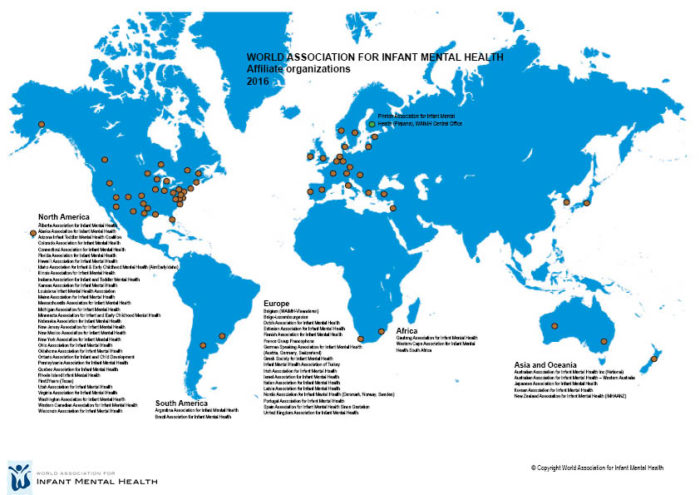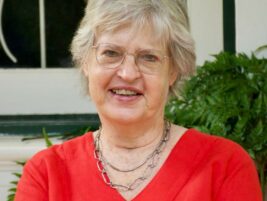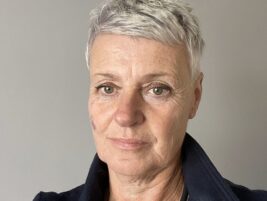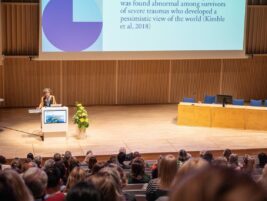The Great North Eastern Earthquake with tsunami in Japan on March 11, 2011 triggered the blast of Fukushima No1 Nuclear power plant 3 days later. A week later, I phoned my friend and pediatric colleague Dr. Shintaro Kikuchi and his father Dr. Tatsuo Kikuchi, a senior pediatrician who is the president of the Medical Society of the City of Koriyama, Fukushima. Together they run a pediatric clinic. Shintaro sounded extremely concerned: “Our local children are in danger of the kind we have never experienced.”
On 21st March, 10 days after the disasters, I visited Koriyama in Fukushima with Dr. Hisako Watanabe, a child psychiatrist at Keio University who was the chair of the 2008 WAIMH congress in Yokohama. We barely saw people walking in the streets. Those who did wore masks and hats and the whole town was in a heavy mood. “We must protect the children of Fukushima. No single PTSD in children! ”, the Kikuchi doctors’ determination and urgency sparked us to act promptly. On that day we laid the foundation of the “Koriyama Post-Disaster Child Psychological Care Project” in collaboration with the local government and medical society, which resulted in an open symposium of child workers of Koriyama on 9th April, 2011.
The project harbored the concept of “Integrity, Structure and Continuity”, and focused on providing a secure base for children, with an emphasis on the prevention and early detection of PTSD in a natural daily-life context. For example, we facilitated volunteers experienced in reading picture books to children to visit evacuation areas and nurseries. We chatted with and befriended parents of young children who appeared worried. Also we empowered parents to prevent PTSD in their child by creating an accessible leaflet entitled “Why not hug your child”. Its copy was distributed to all 50,000 families with young children in Koriyama. Health visitors provided intensive care to all pregnant mothers in the community which prevented abortion from fear.
Our endeavor caught the eyes of a good old friend of Dr. Tatsuo Kikuchi , who is a chairman of a successful local supermarket company. With his generous offer of land and funds combined with an active dedication of a leading toy company, an all season indoor playground for children up till 12 years of age was constructed. Opened on the 23rd of December, 2011, “PEP KIDS KORIYAMA”, the largest and most advanced indoor playground for children in North–Eastern Japan was opened as a Christmas present from the local Santa Claus. Children were able to leave their homes and go to a safe place to play in a lively way to the relief and joy of parents . Now 15 months later, 400 thousand visitors have already played at the PEP KIDs, which revealed the invigorating power of children at play for the revival of the whole community.
The Kikuchis strove restlessly for 2 years since the disasters. Their achievements have come to be highly approved. This year Dr. Shintaro Kikuchi has been newly appointed as a member of the Ministry of Restoration Promotion of the Government of Japan. There are numerous emergent difficult problems ahead: obesity in children of all ages caused by the lack of outdoor play and activities, the psychological impact of the changes in family structures, the ill-effects on local agricultural and marine industry of rumors of radiation contamination on products of Fukushima. Dr. Kikuchi now has a new role of becoming the voice of the people of Fukushima to the government.
The Project anticipates the much awaited construction of an all-season indoor playground for older children and adolescents as huge as the Tokyo Baseball Dome..
My commitment in the Project sparked me to reflect on the link between my paternal and maternal roots: the former is Fukushima, where the nuclear power plant disaster occurred and the latter is Hiroshima where the atomic bomb was dropped. My father comes from a medical family in Fukushima. He started his medical practice in Tokyo but when one of his medical relatives fell ill, he had to return to his hometown to replace him there, leaving his family in Tokyo. In the immediate aftermath of the Fukushima disaster, when almost all doctors and nurses fled, he made up his mind “to stay to save my patients” and helped overcome the crisis.
On 6th August, 1945, when an atomic bomb was dropped on Hiroshima, the first overseas report of the disastrous scene was sent by my maternal grandfather, Leslie Nakashima, who was a second generation Hawaiian Japanese. He was a newspaper reporter and the eldest of 11 siblings. At age 23, he chose to be a USA citizen, out of his dual nationality of Japanese and American. He came to Japan at the age of 32 and worked for a newspaper company in Tokyo. He got married to a Japanese lady at the age of 36. In the following year a baby girl was born and she was my mother.
The war started when he was 39. He was regarded as an enemy alien, which led to police surveillance and he lost his job. He converted to Japanese nationality to protect his family. He was in Tokyo at the time of the Hiroshima atomic bomb. Concerned about his mother who lived in Hiroshima, he ventured alone into the city 16 days later. “I was wordless at the site of the ruins. The only thing left was a concrete platform of the station. The metropolis of a population of 300,000 was gone.” His article was written in weariness from the radiation exposure and was telegraphed to the USA on 27th August. The article appeared in a newspaper in Honolulu on 30th August and in the New York Times on 31st August, 1945.
His wish to regain his USA citizenship was rejected by the Japanese government and he died in Japan as Japanese. My grandfather never confided his wartime experience to any of his grandchildren, while he was always warm with a cheerful smile. Now I cannot but wonder how he must have felt sending his article to his homeland, the USA, as a ‘Japanese’ reporter who in fact maintained his identity as a local Hawaiian boy. In hindsight it was my feelings of respect and redemption towards my father working in Fukushima deprived of his family, and my grandfather sending his historical article to the USA that must have led me to Fukushima in the immediate aftermath of the disaster.
In Japan today, children are adversely affected both psychologically and physically by ever increasing artificial elements of our internet technology society. In Fukushima, the citizens were called to rise to the occasion and be responsible for ensuring the survival of their children in the community with firm determination to remain and live there. The slogan by Dr. Kikuchi, “A true restoration of children in Japan comes from Fukushima” rings true after 2 years. We would like to have you remember Fukushima always. Your support from all over the world will keep us going.
Authors
Tokita, Natsuko,
Department of Pediatrics,
Keio University,
Japan








